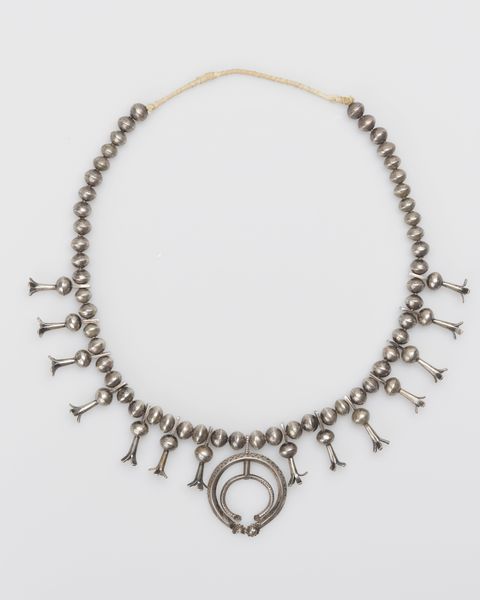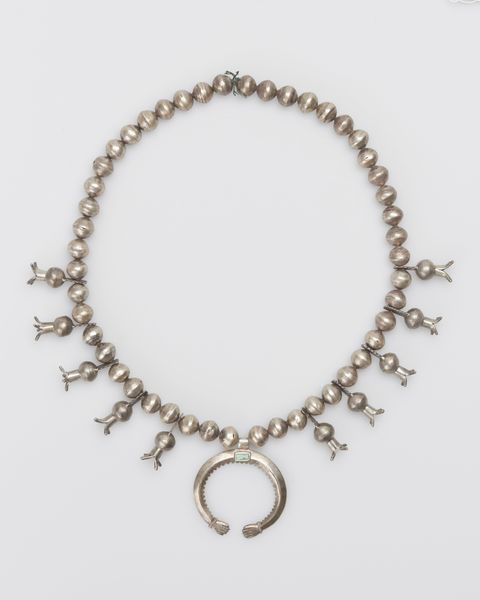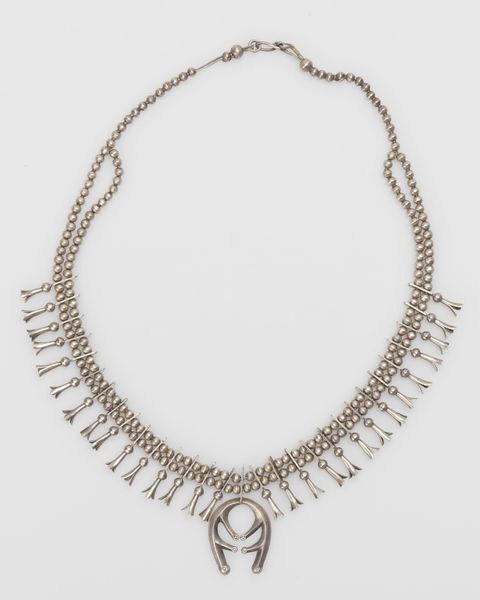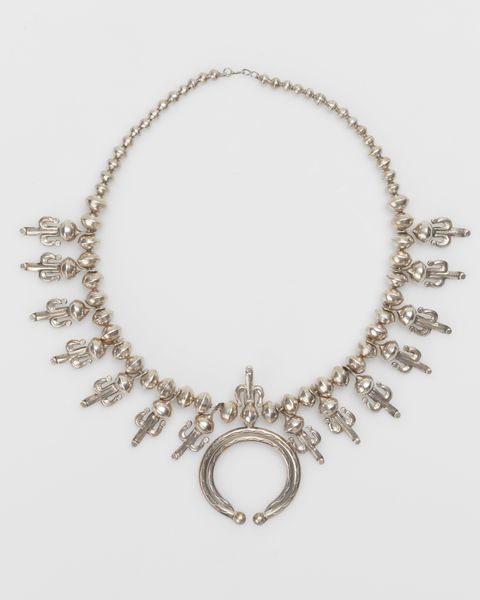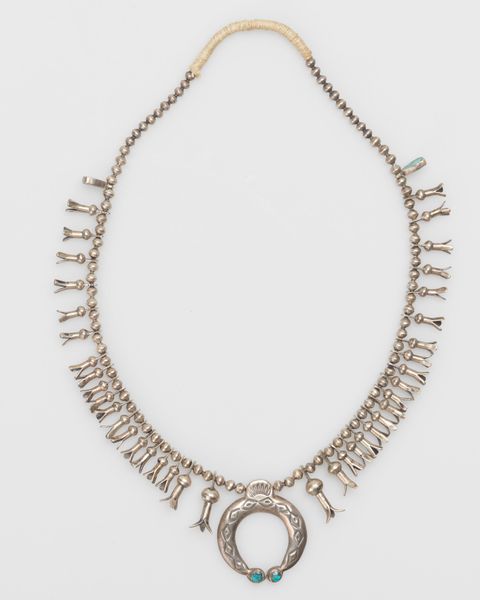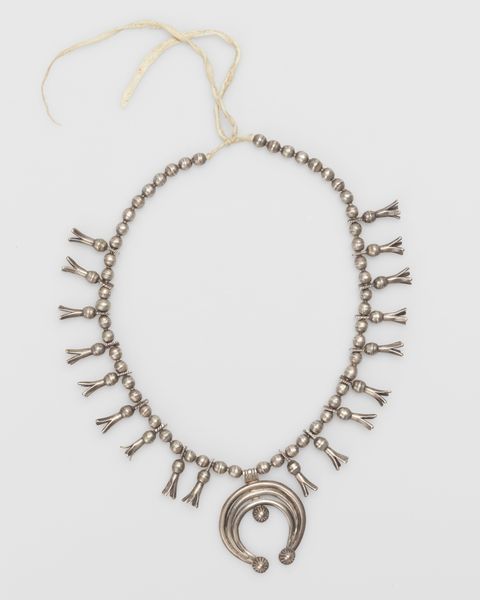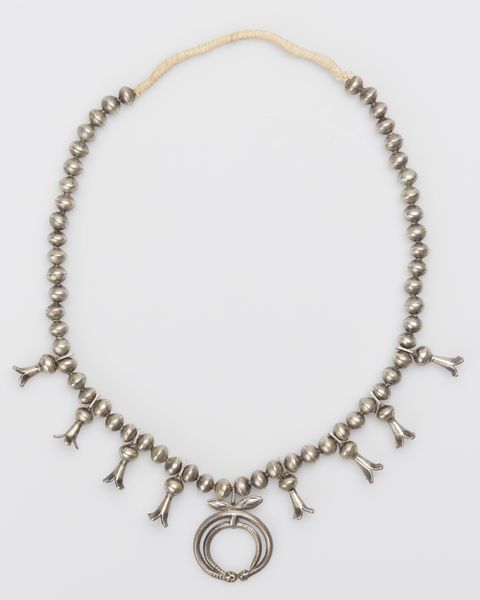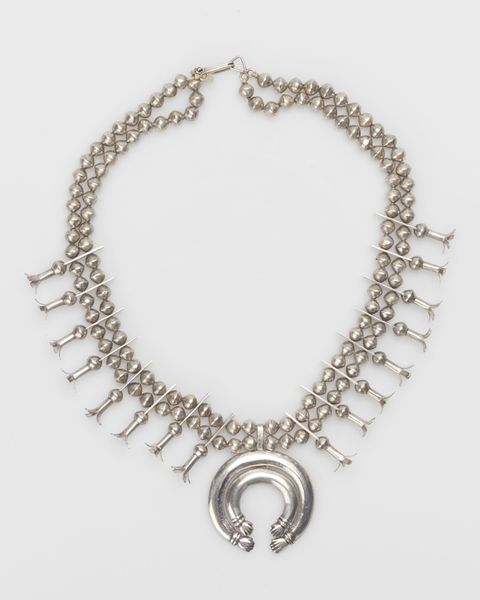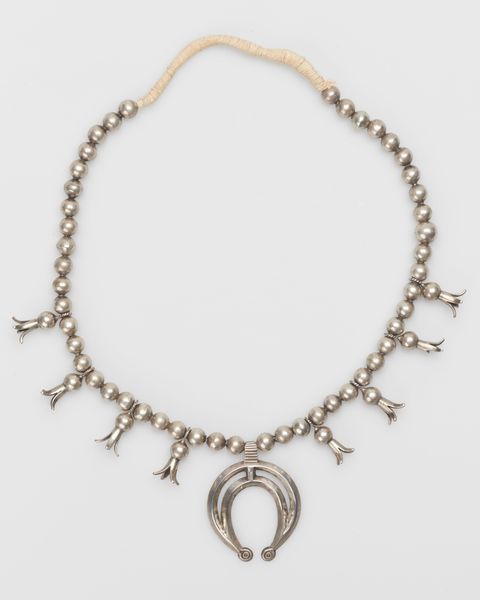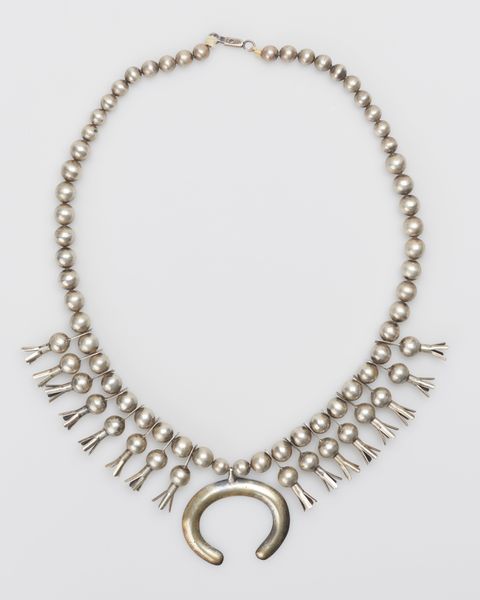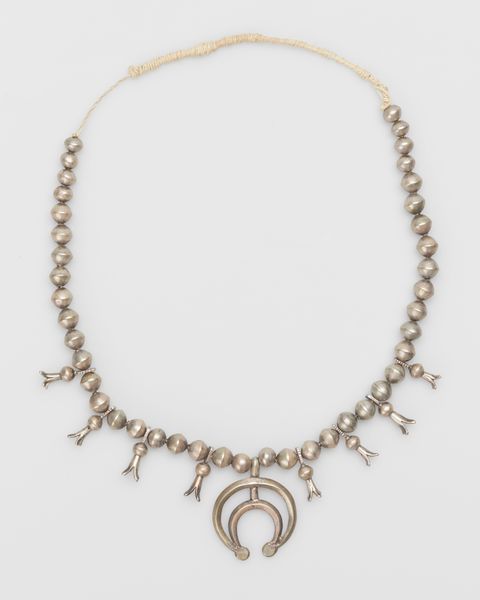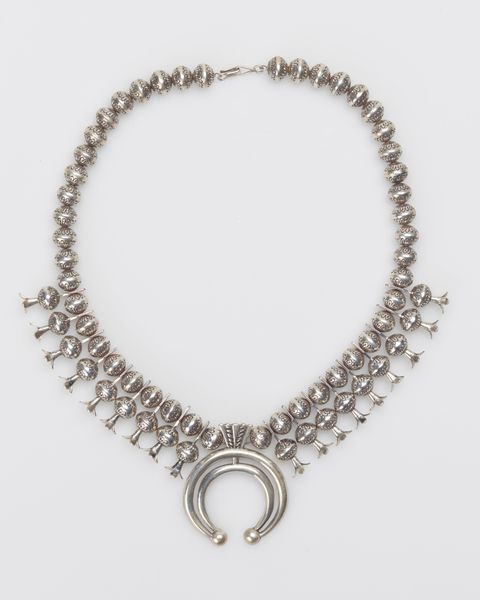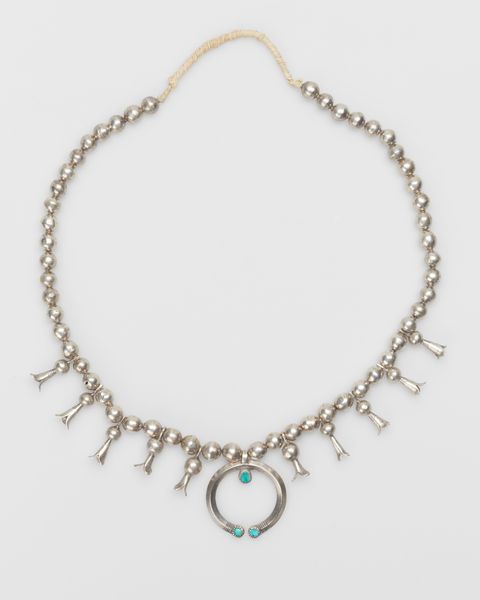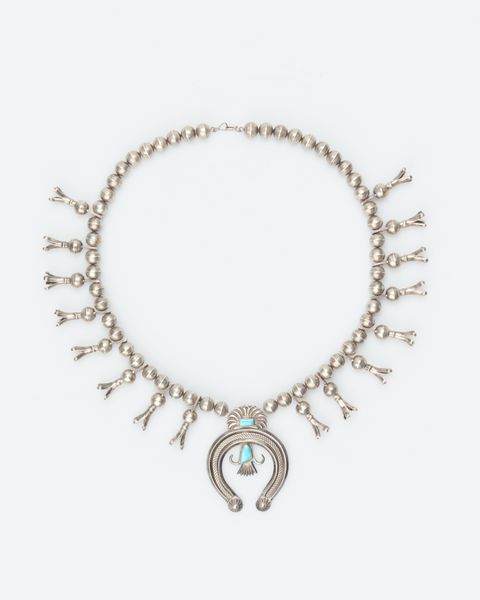
silver, metal
#
silver
#
metal
#
decorative-art
#
indigenous-americas
Copyright: Public Domain
Editor: This is a Navajo necklace made of silver, dating from around the 1950s. It's quite striking – a strand of small silver beads adorned with crescent and star-like pendants. The silver gives it a subtle shimmer. How would you interpret this work within its cultural context? Curator: Seeing this, I immediately think of the interplay between tradition and adaptation. The mid-20th century was a period of increasing interaction between Navajo artists and the broader American market. The Diné, like many Indigenous groups, faced pressures to conform to external aesthetic expectations while also preserving cultural identity. Do you notice any elements that suggest a negotiation of these forces? Editor: Well, the use of silver suggests a connection to traditional Navajo jewelry making, but the stylized crescent and star motifs seem almost… contemporary, or at least simplified. Curator: Exactly. The raw material links it to longstanding Navajo artistry. However, the simplified motifs and potentially their repetition speaks to the demands of a wider market. What public role do you think these adornments fulfilled beyond simple personal beautification? Editor: Hmm, perhaps it's a symbol of cultural resilience? Maintaining artistic practice in the face of assimilation. Or even a form of economic self-determination, selling these pieces allows agency. Curator: Precisely. Navajo jewelry wasn't just decorative; it carried cultural weight. Pieces such as this played a role in shaping outside perceptions of Navajo artistry, impacting representation, and fueling an art market where issues of appropriation always lingered. It’s essential to consider this necklace not in isolation, but within this history of cultural exchange and the politics of representation. What have you gained after analyzing this work? Editor: It's fascinating to think how a piece of jewelry embodies all those layers of history, negotiation, and cultural identity. I had not thought of economic empowerment playing such an integral part. Curator: And it pushes us to consider the broader context of Indigenous art production and reception. Hopefully more work such as this could promote a public role for art.
Comments
No comments
Be the first to comment and join the conversation on the ultimate creative platform.
